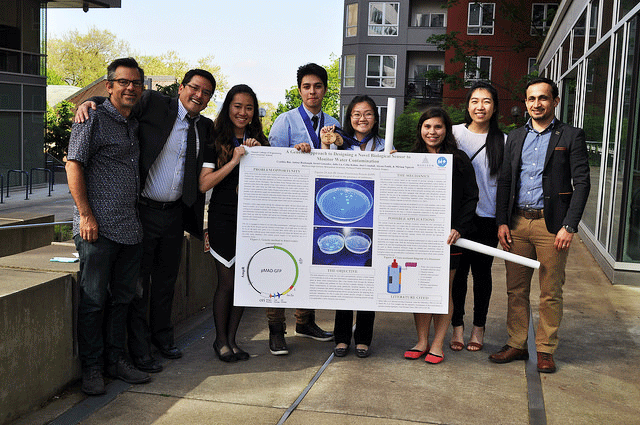Location
Portland State University
Start Date
4-9-2016 9:45 AM
End Date
4-9-2016 11:45 AM
Persistent Identifier
https://archives.pdx.edu/ds/psu/26373
Description
Many cities across the country have experienced extreme water problems. The City of Portland has issued several water boiling advisories due to E. coli contamination. Additionally, there has been incidents of serious contaminants like lead leaching in water systems (Flint, Michigan). The Portland Water Bureau does not use a water treatment plant due to the quality of our water sources; a chlorination plant is used to chlorinate the water from the Bull Run Watershed (our main water source). Not having a water treatment plant makes Oregon more prone to a prolonged absence of potable water should the supply be contaminated. Up until three months ago, Portland had open reservoirs that exposed clean and treated water to the open-air environment, which allowed for recontamination. Despite those now being closed and not in use, Portland’s water system still has various gaps where water can be contaminated.
Portland’s water usage peaks during the summer and tapers off just before kids go back to school. As a result of that decline in usage, a lot of water sits in pipes just waiting to be pumped to homes. The weather is still quite warm all the way through mid-September and possibly well into October. As a result the unused water sitting in pipes heats up with the weather and serves as a breeding ground for a plethora of bacteria and contaminants that pose putative short and long term health risks to the citizens of Portland.
The city is equipped to detect E.coli and other contaminants—although not as quickly as we (the Water Bureau and the citizens) would hope. As of right now, we still test for E.coli the basic way: grow it in a LB petri dish, which takes up to three days. Should another outbreak occur, more people will get sick before the Bureau can call a city-wide water shutdown. Our current system simply is not practical, nor is it completely secure.
Fieldwork Journal
Included in
Engineering Education Commons, Environmental Engineering Commons, Hydraulic Engineering Commons
A Genetic Approach to Designing a Novel Biological Sensor to Monitor Water Contamination
Portland State University
Many cities across the country have experienced extreme water problems. The City of Portland has issued several water boiling advisories due to E. coli contamination. Additionally, there has been incidents of serious contaminants like lead leaching in water systems (Flint, Michigan). The Portland Water Bureau does not use a water treatment plant due to the quality of our water sources; a chlorination plant is used to chlorinate the water from the Bull Run Watershed (our main water source). Not having a water treatment plant makes Oregon more prone to a prolonged absence of potable water should the supply be contaminated. Up until three months ago, Portland had open reservoirs that exposed clean and treated water to the open-air environment, which allowed for recontamination. Despite those now being closed and not in use, Portland’s water system still has various gaps where water can be contaminated.
Portland’s water usage peaks during the summer and tapers off just before kids go back to school. As a result of that decline in usage, a lot of water sits in pipes just waiting to be pumped to homes. The weather is still quite warm all the way through mid-September and possibly well into October. As a result the unused water sitting in pipes heats up with the weather and serves as a breeding ground for a plethora of bacteria and contaminants that pose putative short and long term health risks to the citizens of Portland.
The city is equipped to detect E.coli and other contaminants—although not as quickly as we (the Water Bureau and the citizens) would hope. As of right now, we still test for E.coli the basic way: grow it in a LB petri dish, which takes up to three days. Should another outbreak occur, more people will get sick before the Bureau can call a city-wide water shutdown. Our current system simply is not practical, nor is it completely secure.



Comments
Mentors: Aqeel Al-Bahadily, Anne Ng
A Genetic Approach to Designing a Novel Biological Sensor to Monitor Water Contamination is licensed under the Creative Commons Attribution-NonCommercial 4.0 International License.